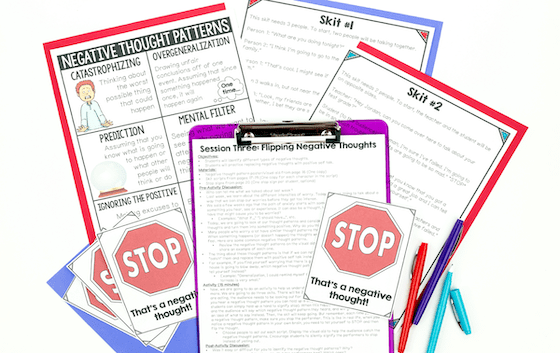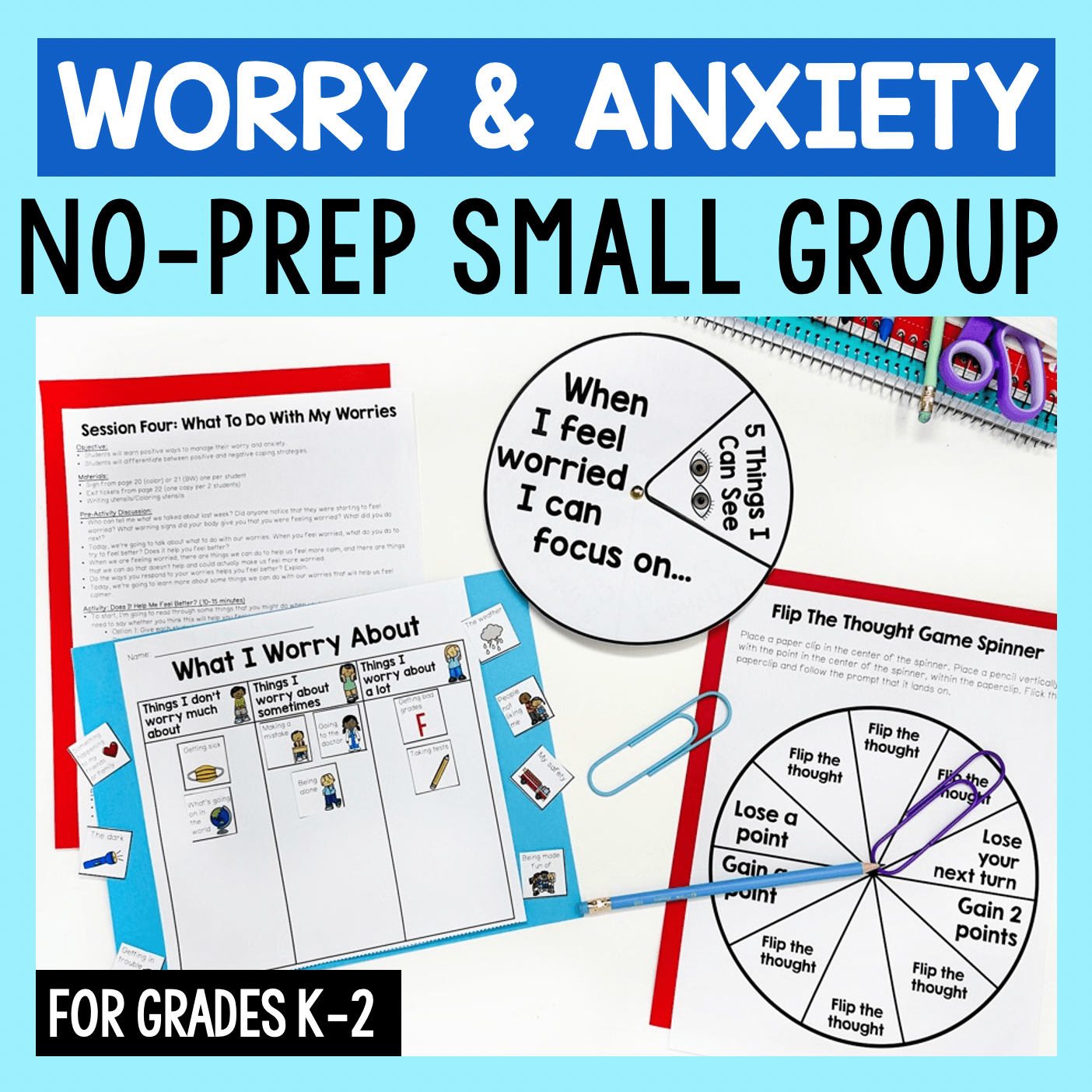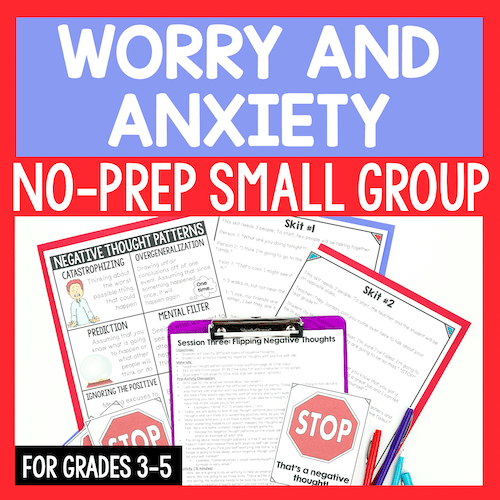Worry and Anxiety Small Group Activities For Kids
These worry and anxiety small group activities for kids are easy to use and will give you the ideas you need to effectively support your students.
Childhood anxiety is on the rise. If you been a counselor for a while, you may be seeing more anxious students than ever before. It can be challenging to know just what to say or do to give students the support they need. By adding these activities to your next small group, you will help your students understand what anxiety is, how they can recognize it, and what they can do about it.
1- Define What Anxiety Is
Worry is a normal feeling. Kids may feel worried about many things - like going to a new school, or a relative that is sick. Many students, though, might not know how to tell whether or not their worry is normal. Taking time to explain to students what worry is and when it’s normal can help students learn to handle their worry in a positive way. By teaching students about what worry and anxiety are, we can empower them to get support when they need it.
In my personal life, I have struggled with anxiety my entire life. However, I didn’t know it until I was in my early 20’s. Because I didn’t know what anxiety was, or what was normal, my anxiety went untreated for a long time.
I love to start off my worry and anxiety small groups with an activity to help students learn the difference between anxiety and normal worries. To start, I explain that although worry is a common and normal experience, it can sometimes turn into anxiety. I then explain anxiety as worries that are intense, frequent, might not seem logical, or include physical symptoms such as quick breathing or a stomachache.
Then, once students know the difference between worry and anxiety, I give them scenarios (or have them come up with their own) and ask them to share whether they think it is worry or anxiety. This is a helpful exercise because it gives students practice in understanding what is a normal worry and what is anxiety.
2- Talk About Anxiety And The Brain
One of the scary parts of worry and anxiety for kids is that they don’t understand what is happening in their brain or body. They feel like they can’t control their thoughts or the bodily sensations that they are having. This feeling of fear and uncertainty can make their anxiety even worse.
By educating students about what is happening in their brains and bodies when they feel anxious, students can better understand their own feelings. They are then less likely to be anxious about being anxious. Thankfully, there are several YouTube videos explaining the science behind anxiety that are perfect to use in your anxiety small group counseling lessons. Here are two of my favorite videos to use:
When students can understand that anxiety is actually rooted in their brain, they see that their anxiety is not a personality defect or their own fault. By understanding the cause of the anxiety, it is easier for students to work through it in a positive way.
3- Teach students how to recognize anxious feelings
Have you ever worked with an anxious student who could name 10 coping skills anytime, anywhere, but never seemed to be able to actually use them in real life? Sometimes this can be because students don’t realize that they are anxious until their feelings are too intense.
That’s why I always make sure to help students learn to recognize when they are starting to feel anxious. When talking about this in your small group, teach your students to recognize their “anxiety warning signs” with these four questions:
What do I DO when I’m starting to feel anxious?
What do I SAY when I’m starting to feel anxious?
What does my body LOOK like when I’m starting to feel anxious?
What does my body FEEL like when I’m starting to feel anxious?
When I was first working with students who have anxiety, I didn’t include this step. Then, we would all get frustrated when they wouldn’t use the 10 coping skills they could easily rattle off. When students can recognize their anxiety before it gets too intense, it is easier for them to use their coping strategies.
4- Help them develop coping strategies for anxiety
Once students recognize that they are anxious, it is important for them to have a variety of strategies they can use to cope with that feeling. Talking about different ways to cope with anxiety will be a key part of your anxiety small group.
It is important to remember that coping strategies are not “one size fits all.” Each student should think about which coping skills they think would work best for them. For example, going on a run can be a great coping skill for many people, but me… no way. Also, some coping skills don’t always work in every situation. For example, writing or journaling can be a great strategy to help students process their anxieties. However, if they are at the park and don’t have access to paper and a writing utensil, they won’t be able to use that strategy.
For this part of your anxiety small group, you can work together as a group to brainstorm as many positive coping skills as possible. Then, ask students to choose 5-10 strategies they think would work best for them. You can then ask students to write down the strategies they chose so they can refer to the list when they need it. Encourage students to choose at least a few strategies that can be used anywhere - like deep breathing or positive self talk.
Worry and anxiety small groups provide a great opportunity to help students understand their feelings and to know that they are not alone. With these 4 simple activities, your next small group is sure to be engaging and effective!
If you want your group to be even easier, check out one of my 6 session NO-PREP worry & anxiety small group plans. It includes everything you need to cover the topics we’ve already talked about and more! Plus, it’s completely print and go, which is perfect for busy counselors like you. So click the black box below to check it out!








